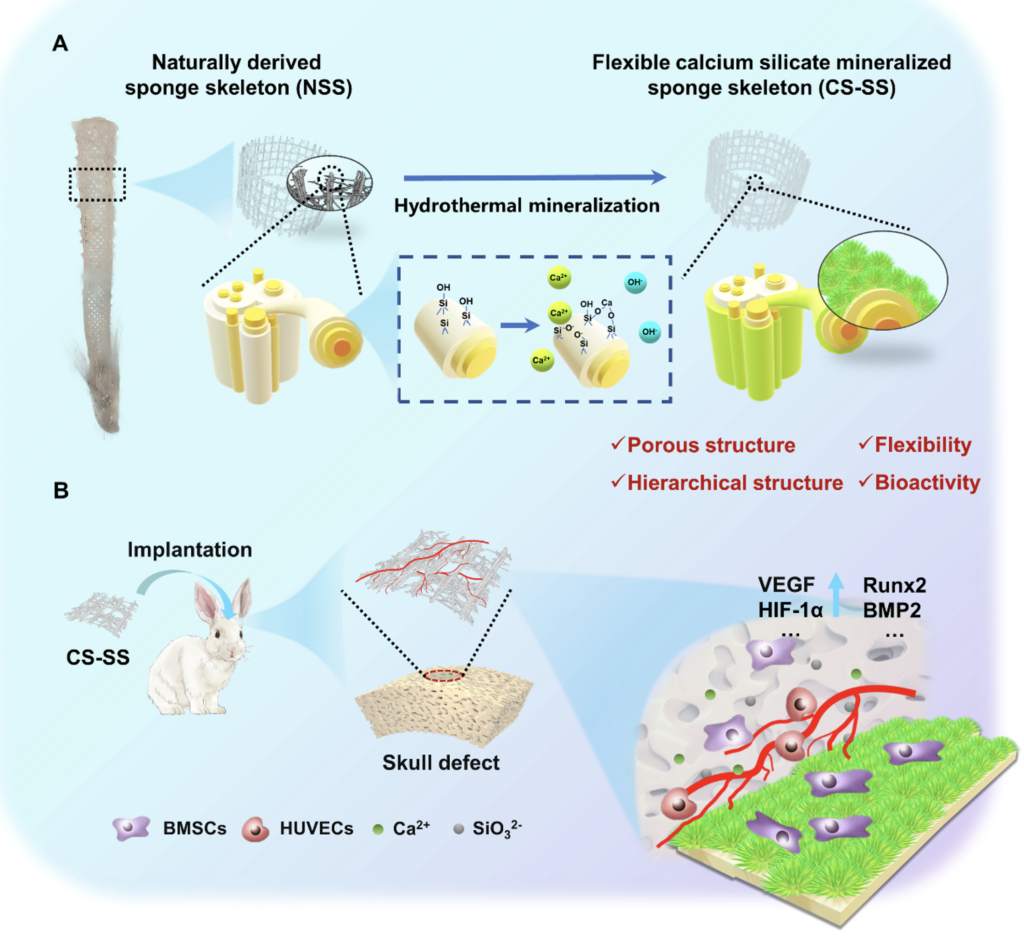https://www.sic.cas.cn/xwzx/tpxw/202401/t20240126_6972499.
The group of Wu Chengtie at the CAS Shanghai Institute of Silicate Research has prepared flexible bioactive ceramics derived from natural sponge skeletons. In this study, the natural sponge skeleton of silica was subjected to low-temperature hydrothermal mineralization in calcium hydroxide solution, and hydrated calcium silicate was grown in-situ on the surface of silica substrate, which realized the close bonding between the bioactive layer and the substrate, and ultimately the naturally derived bioceramic scaffolds were obtained. The activation-treated bioceramic scaffold has excellent in vitro mineralization ability and long-lasting calcium and silicon ion release ability and retains the flexibility and resilience of the original sponge skeleton. It could be arbitrarily cut and tailored to specific shapes, with ideal processing performance, which could satisfy the needs of repairing thin-walled bone tissues of different shapes. Without the introduction of polymer components, the naturally derived flexible bioceramics have much higher flexural strength and fracture toughness than traditional bioceramics and bioceramic-based composite scaffolds, with lightweight and high-strength mechanical properties.
Cellular experiments showed that the naturally derived flexible bioceramic scaffolds could promote the osteogenic differentiation of bone marrow mesenchymal stem cells through the AMPK/ERK signaling pathway, and the bioactive calcium and silicon ions released from the scaffolds could effectively promote endothelial cell proliferation, migration, tubulation, and angiogenic gene expression. The results of animal experiments on rabbit cranial defects further indicated that the naturally derived flexible bioceramic scaffolds could support angiogenesis and bone regeneration. This flexible bioactive ceramic scaffold developed based on biomass reuse strategy is expected to generate promising applications in the repair of thin-walled irregular bone tissues, such as cranial and orbital bones, and to expand new ideas for the fabrication of advanced bioceramics.

